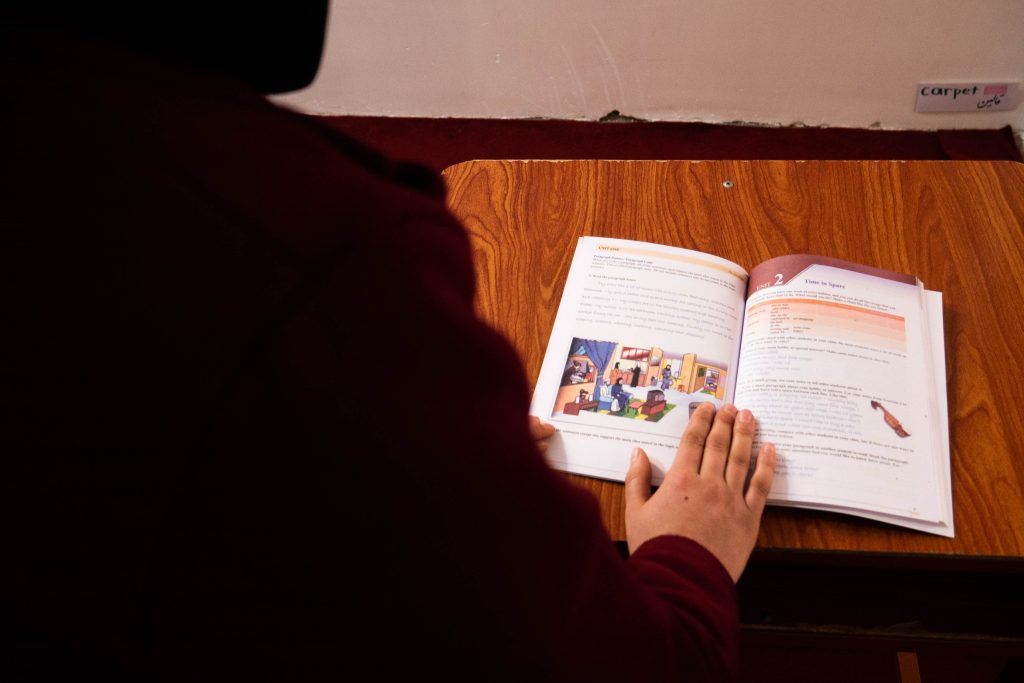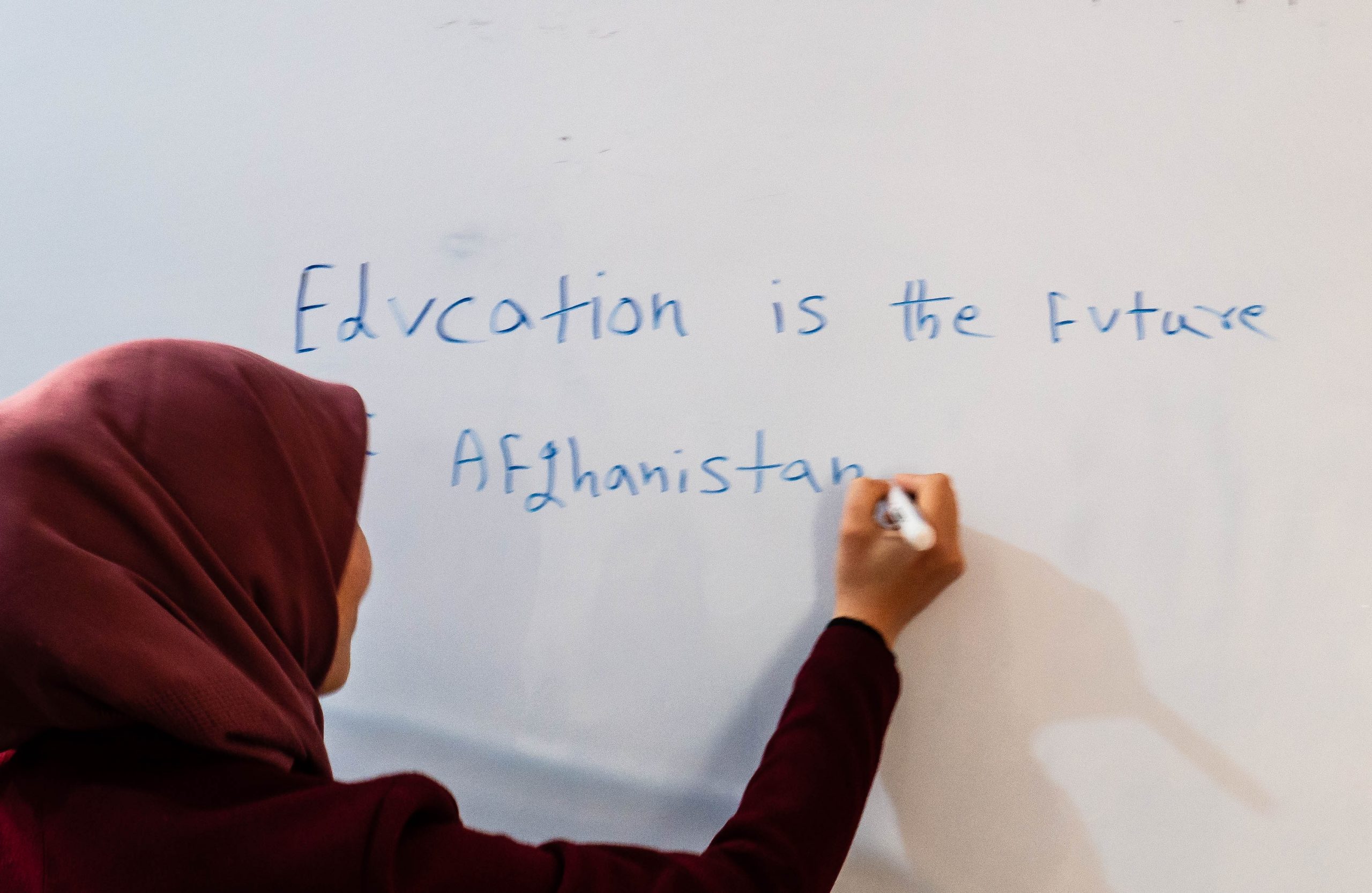“If a teacher came towards me, my hands would be shaking. I was so scared,” says 19-year-old Anisa*.
“I had really low self-esteem.”
Anisa speaks quickly and passionately, her eyes lighting up as she shares how excited she is to bring new teaching methods back to her village school. It’s hard to believe that this young woman used to have so little confidence she didn’t even believe she was capable of doing her homework. She would skip school to save herself from being beaten by her teacher.
Just two years later, Anisa is one of 45 women over halfway through their teacher training at the International Assistance Mission’s Female Teacher Education Project (FTEP). She and her classmates split their time between the local Teacher Training College – where they’re working to become accredited teachers – and their FTEP classes, where we work to improve their level of education in Dari, English, Maths, and Computers, and also train them in different teaching methods.
“In the beginning the girls did not have much knowledge,” says Masuma* (not her real name), one of the teacher trainers at FTEP. “In many villages, teachers stand in front of the class and explain the lesson, and the students have to just learn what the teachers say.

“[At FTEP] we’re focusing on how we can reach our students, and how we can help them understand the lesson – using lots of activities.
In many villages in Afghanistan, girls are forced to drop out of school when they’re very young. A lack of female teachers in these communities means that girls from more conservative families miss out on their education because they are not given permission to be taught by a man. By training girls from these villages to be teachers, we’re working to ensure that more girls get the opportunity to go to school and to improve the quality of education they get when they are there.
“It’s not just about going and giving a lesson and getting my money,” says Anisa, who shows all the signs of thriving in the project. “It’s about being able to see when a student is doing less well and meeting them where they’re at and encouraging them. It’s about thinking about developing the village and developing the community.”
As well as teaching pedagogy – the theory and practice of learning – IAM’s FTEP teachers work to model good ways of teaching in their lessons. They ask their students questions and encourage them to speak. They use activities rather than just reading from a textbook. And they make their students the centre of the classroom.
This way of teaching and learning has transformed Anisa’s experience of education. “I didn’t really like school, I didn’t care about it,” she says. “And then I came here and I have become so passionate about it. I’m really, really excited to go back to my village. I think I can really develop the school there.”

Anisa and her classmates at FTEP come from 18 different villages. Once they’ve finished the programme, they hope to return to their communities as qualified teachers, bringing high-quality education to girls, boys and women – who might finally be able to get the education they missed out on once there are female teachers in their villages.
“I think a lot of young women have low self-esteem, like I did,” says Anisa. “So I really want to show them that they have a lot of abilities and skills. And I want to encourage [parents], not just in my own school, but in all the schools around, to say ‘don’t bury your daughters’ dreams. But help them reach their dreams by getting an education.’”
We can’t wait to see what impact Anisa and the 44 other FTEP students are going to make in their villages when they complete their training – bringing better education and more opportunities for everyone, especially girls.
*names changed
Want to know more about our work in education? Visit iamafg.org/education now!